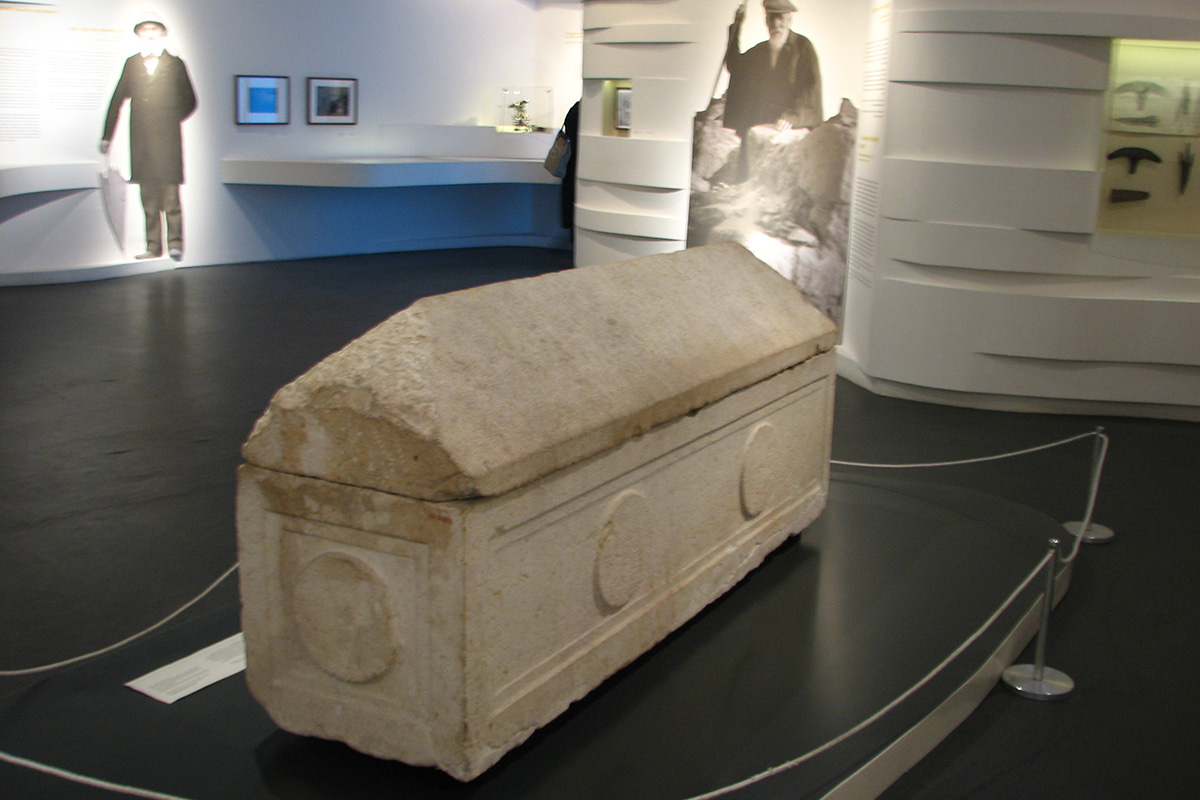The Genetic Bonds Between Kurds and Jews
Kurds are the Closest Relatives of Jews
In 2001, a team of Israeli, German, and Indian scientists discovered that the majority of Jews around the world are closely related to the Kurdish people -- more closely than they are to the Semitic-speaking Arabs or any other population that was tested. The researchers sampled a total of 526 Y-chromosomes from 6 populations (Kurdish Jews, Kurdish Muslims, Palestinian Arabs, Sephardic Jews, Ashkenazic Jews, and Bedouin from southern Israel) and added extra data on 1321 persons from 12 populations (including Russians, Belarusians, Poles, Berbers, Portuguese, Spaniards, Arabs, Armenians, and Anatolian Turks). Most of the 95 Kurdish Muslim test subjects came from northern Iraq. Ashkenazic Jews have ancestors who lived in central and eastern Europe, while Sephardic Jews have ancestors from southwestern Europe, northern Africa, and the Middle East.
The Kurdish Jews and Sephardic Jews were found to be very close to each other. Both of these Jewish populations differed somewhat from Ashkenazic Jews, who mixed with European peoples during their diaspora. The researchers suggested that the approximately 12.7 percent of Ashkenazic Jews who have the Eu 19 chromosomes -- which are found among between 54 and 60 percent of Eastern European Christians -- descend paternally from eastern Europeans (such as Slavs) or Khazars. But the majority of Ashkenazic Jews, who possess Eu 9 and other chromosomes, descend paternally from Judeans who lived in Israel two thousand years ago. In the article in the November 2001 issue of The American Journal of Human Genetics1, Ariella Oppenheim of the Hebrew University of Israel wrote that this new study revealed that Jews have a closer genetic relationship to populations in the northern Mediterranean (Kurds, Anatolian Turks, and Armenians) than to populations in the southern Mediterranean (Arabs and Bedouins).
A previous study by Ariella Oppenheim and her colleagues, published in Human Genetics in December 20002, showed that about 70 percent of Jewish paternal ancestries and about 82 percent of Palestinian Arabs share the same chromosomal pool. The geneticists asserted that this might support the claim that Palestinian Arabs descend in part from Judeans who converted to Islam. With their closer relationship to Jews, the Palestinian Arabs are distinctive from other Arab groups, such as Syrians, Lebanese, Saudis, and Iraqis, who have less of a connection to Jews.
A study by Michael Hammer et al., published in PNAS in June 20003, had identified a genetic connection between Arabs (especially Syrians and Palestinians) and Jews, but had not tested Kurds, so it was less complete.
Many Kurds have the "Jewish" Cohen Modal Haplotype
In the 1990s, a team of scientists (including the geneticist Michael Hammer, the nephrologist Karl Skorecki, and their colleagues in England)4 discovered the existence of a haplotype which they termed the "Cohen modal haplotype" (abbreviated as CMH). Cohen is the Hebrew word for "priest", and designates descendants of Judean priests from two thousand years ago. Initial research indicated that while only about 3 percent of general Jews have this haplotype, 45 percent of Ashkenazic Cohens have it, while 56 percent of Sephardic Cohens have it. David Goldstein, an evolutionary geneticist at Oxford University, said: "It looks like this chromosomal type was a constituent of the ancestral Hebrew population." Some Jewish rabbis used the Cohen study to argue that all Cohens with the CMH had descended from Aaron, a High Priest who lived about 3500 years ago, as the Torah claimed. Shortly after, it was determined that 53 percent of the Buba clan of the Lemba people of southern Africa have the CMH, compared to 9 percent of non-Buba Lembas. The Lembas claim descent from ancient Israelites, and they follow certain Jewish practices such as circumcision and refraining from eating pork, and for many geneticists and historians the genetic evidence seemed to verify their claim.
However, it soon became apparent that the CMH is not specific to Jews or descendants of Jews. In a 1998 article in Science News5, Dr. Skorecki indicated (in an interview) that some non-Jews also possess the Cohen markers, and that the markers are therefore not "unique or special". The CMH is very common among Iraqi Kurds, according to a 1999 study by C. Brinkmann et al.6 And in her 2001 article, Oppenheim wrote: "The dominant haplotype of the Muslim Kurds (haplotype 114) was only one microsatellite-mutation step apart from the CMH..." (Oppenheim 2001, page 1100). Furthermore, the CMH is also found among some Armenians, according to Dr. Levon Yepiskoposyan (Head of the Institute of Man in Yerevan, Armenia), who has studied genetics for many years. Dr. Avshalom Zoossmann-Diskin wrote: "The suggestion that the 'Cohen modal haplotype' is a signature haplotype for the ancient Hebrew population is also not supported by data from other populations."7.
In short, the CMH is a genetic marker from the northern Middle East which is not unique to Jews. However, its existence among many Kurds and Armenians, as well as some Italians and Hungarians, would seem to support the overall contention that Kurds and Armenians are the close relatives of modern Jews and that the majority of today's Jews have paternal ancestry from the northeastern Mediterranean region.
The Jewish Kingdom of Adiabene in Ancient Kurdistan
In ancient times, the royal house of Adiabene and some of the common people of Adiabene converted to Judaism. The capital city of Adiabene was Arbela (known today by Arabs as Irbil and by Kurds as Hawler). King Izates became closely attached to his new faith, and sent his sons to study Hebrew and Jewish customs in Jerusalem. His successor to the throne was his brother Monobazos II, who also adopted Judaism. In her 2001 study, Oppenheim references the kingdom of Adiabene, but suggests that while Adiabene's conversion to Judaism "resulted in the assimilation of non-Jews into the community... This recorded conversion does not appear to have had a considerable effect on the Y chromosome pool of the Kurdish Jews."8. Some of the Jewish Adiabenians may have eventually converted to Christianity.
Conclusions
Research has just begun into the ancient ties between Kurds and Jews. It would be interesting to see if the various Jewish groups have as strong a family tie to Kurds in the maternal lineages as they do in the paternal lineages. Preliminary studies indicate that Jewish populations in eastern Europe and Yemen have maternal origins that contain much more non-Israelite ancestry than their paternal origins. Despite this admixture with other groups, the Jewish Judean people ultimately began their existence in an area within or nearby Kurdistan, prior to migrating southwest to Israel. This exciting research showing that Kurds and Jews may have shared common fathers several millennia ago should, hopefully, encourage both Kurds and Jews to explore each others' cultures and to maintain the friendship that Kurds and Jews enjoyed in northern Iraq in recent times (as chronicled in Michael Rubin's recent article "The Other Iraq"8. As Rubin indicates, the Kurdish leader Mullah Mustafa Barzani once visited Israel and met with Israeli government officials. Rubin refers to the Iraqi Kurds' "special affinity for Israel" and writes that "In the safe haven of Iraqi Kurdistan, the Jews and Israel are remembered fondly, if increasingly vaguely." Let us hope that this relationship can be renewed and strengthened.
Source: Barzan
Footnotes
1.↑ A. Nebel, D. Filon, B. Brinkmann, P. P. Majumder, M. Faerman, and A. Oppenheim, “The Y Chromosome Pool of Jews as Part of the Genetic Landscape of the Middle East”, The American Journal of Human Genetics (November 1, 2001), 69(5):1095–1112.2.↑ A. Nebel, D. Filon, D. A. Weiss, M. Weale, M. Faerman, A. Oppenheim, M. G. Thomas, “High-resolution Y chromosome haplotypes of Israeli and Palestinian Arabs reveal geographic substructure and substantial overlap with haplotypes of Jews”, Human Genetics (December 1, 2000), 107(6):630-641.
3.↑ M. F. Hammer, A. J. Redd, E. T. Wood, M. R. Bonner, H. Jarjanazi, T. Karafet, S. Santachiara-Benerecetti, A. Oppenheim, M. A. Jobling, T. Jenkins, H. Ostrer, and B. Bonné-Tamir, “Jewish and Middle Eastern non-Jewish populations share a common pool of Y-chromosome biallelic haplotypes”, PNAS (June 6, 2000), 97(12):6769–6774.
4.↑ M. F. Hammer, K. Skorecki, S. Selig, S. Blazer, B. Rappaport, R. Bradman, N. Bradman, P. J. Waburton and M. Ismajlowicz, “Y chromosomes of Jewish priests”, Nature (January 2, 1997), 385:32.
5.↑ Travis, J. “The Priests' Chromosome?”, Science News (October 3, 1998), 154(14): 218.
6.↑ C. Brinkmann, P. Forster, M. Schürenkamp, J. Horst, B. Rolf and B. Brinkmann, “Human Y-chromosomal STR haplotypes in a Kurdish population sample”, International Journal of Legal Medicine (April 1, 1999), 112(3):181-183.
7.↑ A. Zoossmann-Diskin, “Are today's Jewish priests descended from the old ones?”, Journal of Comparative Human Biology (2000), 51(2-3):156-162.
8.↑ A. Oppenheim, “The Y Chromosome Pool of Jews as Part of the Genetic Landscape of the Middle East”, 1103.
9.↑ M. Rubin, “The Other Iraq”, The Washington Institute (December 31, 2001).








Kevin Alan Brook
Historian, Specialist on the Khazars, Contributor to The Encyclopaedia of Judaism, Second Edition (Brill, 2005)